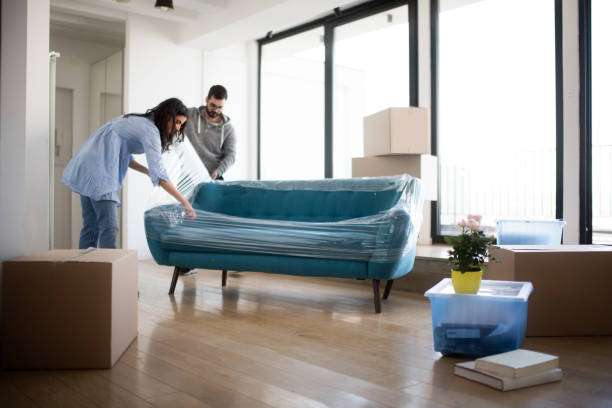Imagine yourself as a landlord. You’ve meticulously renovated your property, but one crucial element remains: the flooring. What type will stand the test of time, appeal to a wide range of tenants, and keep your investment safe?

Image: colorinteriors.com
Choosing the right flooring for a rental property is a balancing act between aesthetics, durability, and cost-effectiveness. This guide explores the top flooring options, emphasizing their pros and cons, and helping you make an informed decision that ensures your investment thrives, while attracting tenants and minimizing maintenance headaches.
Durability: The Foundation of Your Investment
Rental properties face a unique set of challenges. Foot traffic, spills, furniture scrapes, and even pet accidents can quickly damage delicate flooring. Prioritizing durable materials is paramount.
Hardwood: Classic Elegance with a Durable Edge
Hardwood flooring exudes timeless elegance and easily elevates the look of a property. But beyond aesthetics, it’s surprisingly resilient. While scratches can occur, hardwood can be refinished multiple times, extending its lifespan significantly.
However, hardwood’s susceptibility to moisture makes it a risky choice in bathrooms or kitchens, particularly in humid climates. Additionally, the installation process can be more costly than other options.
Luxury Vinyl Plank (LVP): A Versatile and Budget-Friendly Contender
LVP is a rising star in the rental flooring world. Mimicking the look of real wood or stone, it offers unparalleled design versatility. Moreover, its water-resistant core and scratch-resistant surface make it ideal for high-traffic areas and families with pets.
LVP’s affordability and ease of installation make it an excellent choice for landlords on a budget. It generally requires minimal maintenance and can be replaced section by section if damage occurs, further reducing repair costs.

Image: www.studiojeandre.com
Ceramic and Porcelain Tiles: The Unbeatable Champions of Durability
For ultimate durability and moisture resistance, ceramic and porcelain tiles reign supreme. These materials are virtually impervious to scratches, spills, and moisture, making them perfect for kitchens, bathrooms, and even outdoor spaces.
While initial installation costs may be higher, the longevity and low maintenance of tiles make them a financially sound investment in the long run. However, consider the potential for slipping on wet surfaces, especially for tenants with children or elderly individuals.
Aesthetics: Appealing to the Modern Tenant
Rental properties that showcase stylish flooring options attract higher-quality tenants and command premium rental rates. Your choice should balance durability with visual appeal.
LVP: The Design Chameleon
LVP’s crowning achievement lies in its versatility. It can mimic the look of wood, stone, or even concrete, allowing you to cater to a wide range of tenant preferences. Whether your property is modern, farmhouse chic, or traditional, LVP seamlessly blends into any design style.
Hardwood: The Classic Choice
Hardwood floors offer a warm and natural aesthetic that never goes out of style. While lighter colors can brighten up a space, darker shades can create a more sophisticated and elegant ambiance.
The timeless appeal of hardwood ensures its value remains high, making it a worthwhile investment even when it comes time to sell your property.
Tile: A Bold and Versatile Statement
Tile flooring, especially in large format tiles, can create a modern and visually impactful look. From rustic terracotta to sleek porcelain, the design options are endless. Consider using different tile patterns and colors to create interesting visual transitions within a room.
For a contemporary touch, use geometric tile patterns, while traditional styles benefit from classic subway tile or intricate mosaics.
Cost-Effectiveness: Balancing Investment and ROI
The initial cost of flooring is only one factor in the overall equation. Consider the longevity, maintenance needs, and potential for future upgrades to ensure your investment generates the highest return.
LVP: A Budget-Friendly Winner
LVP consistently emerges as the most cost-effective option. Its affordability across all price points makes it the perfect choice for landlords seeking to maximize their investment without sacrificing quality.
Furthermore, its ease of installation and potential for DIY projects can further reduce labor costs.
Hardwood: An Investment Worth Considering
While hardwood carries a higher upfront cost, its enduring value and potential for appreciation should not be overlooked. If you anticipate holding onto the property for an extended period, the long-term ROI of hardwood can be significant.
Tile: Balancing Cost and Durability
Tile flooring offers a balance between durability and cost. While it may be slightly more expensive upfront, its low maintenance and long lifespan (often exceeding 50 years) can generate excellent ROI over time.
Considerations for Rental Property Flooring
Beyond the core factors of durability, aesthetics, and cost-effectiveness, several additional considerations are crucial for rental property flooring:
Tenant Preferences and Demographics
Consider the types of tenants you target. For families with young children, LVP’s durability and water resistance might be ideal. For professional renters, hardwood might be more appealing. Researching tenant demographics in your area will guide your choice.
Maintenance Requirements and Costs
Some flooring options require more maintenance than others. Hardwood needs regular refinishing, tiles require grout cleaning, and LVP might require occasional waxing. Factor these costs into your overall budget and consider choosing low-maintenance options.
Noise Reduction
Consider the noise levels generated by different flooring materials. Hardwood can be loud, especially in multi-story buildings. LVP and tile come in versions with sound-dampening underlayment, minimizing noise transfer between units.
Sustainability
Eco-conscious tenants are increasingly seeking sustainable flooring options. Look for materials made from recycled content, sustainably harvested wood, or eco-friendly manufacturing processes.
Best Type Of Flooring For Rental Property
Conclusion: Making a Smart Choice for Your Rental Property
Choosing the right flooring for your rental property is a strategic investment that pays off in long-term value, tenant satisfaction, and a smooth rental experience. By prioritizing durability, aesthetics, and cost-effectiveness while considering tenant preferences and maintenance needs, you can select a flooring option that maximizes your ROI and attracts the best tenants possible.





